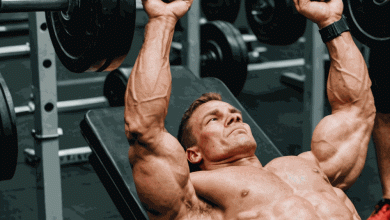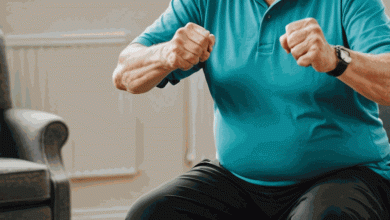Building the Perfect Home Gym: A Comprehensive Guide

If you’re looking to build your own home gym, you may be overwhelmed with the plethora of exercise equipment available. With so many options, how do you know where to start? And if you already have some equipment, how do you determine what to add next? In this article, we will provide you with expert recommendations based on years of experience helping individuals like yourself. Whether you’re a beginner or a seasoned fitness enthusiast, we’ve got you covered. So, let’s dive in!
Chapter 1: Introduction to Building a Home Gym
Before we delve into the specific equipment recommendations, let’s first understand the concept of keyword cannibalization. Put simply, keyword cannibalization occurs when multiple pages on your website target the same or very similar keywords. This can cause confusion for search engines, hindering your rankings.
But why should you care about keyword cannibalization? It’s simple – understanding and fixing this issue can lead to improved search rankings and increased organic traffic. Now that we know the problem, let’s explore the different facets of keyword cannibalization and its impact on SEO.
Chapter 2: Recommended Equipment for General Health and Fitness Goals
If your goal is to improve your overall health and fitness, the following equipment is essential for your home gym setup. These recommendations are based on versatility, affordability, and space efficiency.
2.1: The Versatility of Dumbbells
When it comes to versatility, dumbbells are unrivaled. With just a set of dumbbells, you can target every muscle in your body and achieve excellent results. Opt for a set of adjustable dumbbells that can go from 2.5 to 52.5 pounds per dumbbell. This will give you the flexibility to increase the weights as your fitness level improves.
Can’t find adjustable dumbbells? No worries! You can DIY your own using one-gallon water jugs. Each jug weighs around 8.34 pounds, and with some creative handling, you can achieve weights up to 25 pounds per hand. It’s a cost-effective solution that will get you started on your fitness journey.
2.2: The Importance of a Bench
A bench is a crucial piece of equipment that allows you to perform a wide range of exercises effectively. Whether it’s dumbbell presses, step-ups, or box jumps, a sturdy and adjustable bench will enhance your workout experience. If you’re on a tight budget, a flat bench will suffice. However, if you have the means, investing in an adjustable bench will offer greater versatility, especially for incline exercises.
2.3: Adding Cables or Resistance Bands
To maximize your workout routine, consider incorporating cables or resistance bands into your home gym. While resistance bands are more affordable and portable, cables offer greater tension throughout the entire range of motion. Cables are especially valuable for targeting your back muscles, as they allow you to hit various angles and increase workout effectiveness.
2.4: The Benefits of a Pull-Up Bar
A pull-up bar is an excellent addition to any home gym, as it provides a challenging bodyweight exercise for your upper body. Most racks come with a built-in pull-up bar, and even if they don’t, you can easily perform pull-ups using the top cross members. By adding a pull-up bar, you’ll be able to work on your back, biceps, and overall upper body strength.
Chapter 3: Building Muscle and Aesthetics
For those focused on building muscle and achieving an aesthetic physique, the following equipment will take your workouts to the next level.
3.1: Considerations for Muscle-Specific Goals
If your goal is purely muscle growth, we recommend starting with dumbbells and cables or resistance bands. These two pieces of equipment provide the versatility and variation needed to target every muscle group effectively.
3.2: The Value of Dumbbells and Cables/Bands
Dumbbells and cables/bands are essential for achieving hypertrophy (muscle growth) due to the wide range of exercises and angles they offer. With dumbbells, you can perform various presses, curls, and flyes, while cables/bands allow you to engage your muscles from different angles, effectively tearing fibers and promoting muscle growth.
Chapter 4: Strength-Specific Goals
If your main goal is strength, we recommend focusing on barbell exercises. Barbells provide greater resistance and allow for progressive overload, which is essential for strength gains. Here are the key equipment recommendations for your strength-specific goals.
4.1: Starting with a Barbell and Weight Plates
A barbell and weight plates are foundational for strength training. They allow you to perform compound exercises like squats, deadlifts, and bench presses, which engage multiple muscle groups and build overall strength. While a rack and bench are also vital, it makes sense to prioritize the barbell and weights to get started.
4.2: Adding a Rack for Squats and Pull-Ups
To take your strength training to the next level, investing in a rack is essential. A rack not only provides safety and stability during heavy squats, but it also gives you the ability to perform pull-ups and other bodyweight exercises. It’s a versatile piece of equipment that adds significant value to your home gym.
4.3: Incorporating a Bench Press
Finally, a bench press completes your basic strength setup. With a bench, you can perform crucial exercises like bench presses, shoulder presses, and tricep extensions. It’s a fundamental piece of equipment that delivers excellent results when combined with the barbell and rack.
Chapter 5: Expanding and Customizing Your Home Gym
Once you’ve covered the essentials, you can consider expanding your home gym to include additional equipment for a more customized workout experience. Here are some recommendations for taking your home gym to the next level.
5.1: DIY Landmine Setup
A landmine setup is a versatile addition to your home gym that allows you to perform exercises like landmine rows, landmine presses, and barbell twists. You can easily create your own by inserting a barbell into a corner using a sturdy support system to protect both the bar and the wall.
5.2: The Benefits of an Easy Bar
An easy bar, also known as a curl bar or a cambered bar, provides a more comfortable grip and wrist position for exercises like curls and overhead presses. This can reduce the strain on your elbows and shoulders, allowing for more effective and pain-free workouts.
5.3: Plyo Box and Step-Up Box for Leg Work
Consider adding a plyo box or a step-up box to your home gym for various leg exercises. These boxes can be adjusted to different heights, allowing you to perform exercises like step-ups, split squats, box squats, and box jumps. It’s a versatile tool that adds intensity and variety to your leg workouts.
5.4: Useful Accessories (Hip Thrust Pad, Blood Flow Restriction Bands, Ankle Straps)
To enhance your workout experience, consider adding some accessories to target specific areas. A hip thrust pad can provide comfort and stability during heavy hip thrusts. Blood flow restriction bands can help intensify your workouts, especially with lighter weights, by restricting blood flow to the muscles. And ankle straps are excellent additions for cable or resistance band exercises that target your glutes and hips.
5.5: Enhancing Calf Raises with a 2×12
For effective calf raises, consider using a 2×12 board. By elevating your heels, you can increase the range of motion and fully engage your calf muscles, leading to better results.
Chapter 6: Conclusion and Final Recommendations
Building your own home gym is an exciting endeavor that allows you to work out conveniently and effectively. By understanding your specific goals and choosing the right equipment, you can create a tailored fitness experience that produces noticeable results.
If you’re unsure which equipment to prioritize, consider starting with the basics recommended for general health and fitness goals. As you progress and expand your workouts, you can add equipment based on your desired outcomes, whether it’s muscle growth, strength, or a combination of both.



